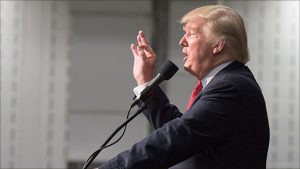
Trump to put import taxes on pharmaceuticals, kitchen cabinets, furniture and heavy trucks
Trump said on Truth Social that the pharmaceutical tariffs would not apply to companies that are building manufacturing plants in the United States, which he defined as either “breaking ground” or being “under construction.”












